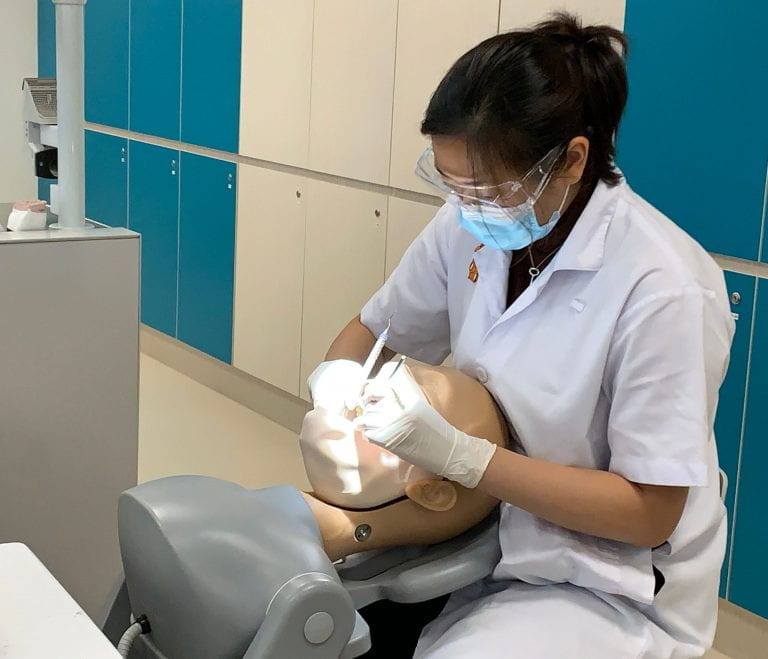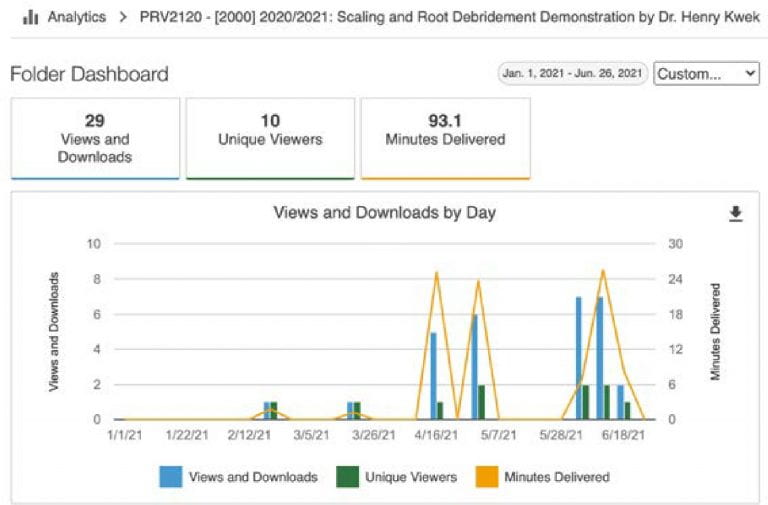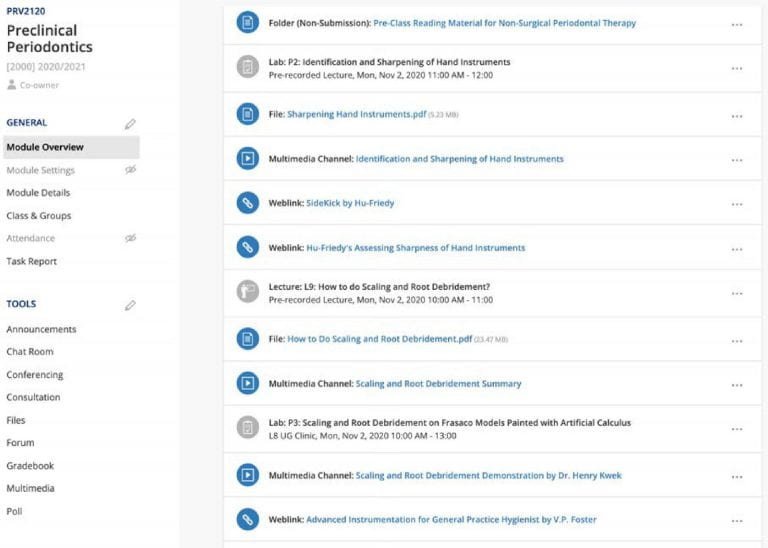FU Jia Hui
Faculty of Dentistry
Jia Hui shares her experience of comparing traditional approach of one-on-one staff guidance and a technology-enhanced flipped classroom approach for teaching scaling and root debridement (ScRD) in her preclinical periodontics course, in particular examining whether the latter approach enhanced student learning.

Fu J. H. (2021, Nov 24). Using an evidence-based approach to design a blended learning module. Teaching Connections. https://blog.nus.edu.sg/teachingconnections/2021/11/24/using-an-evidence-based-approach-to-design-a-blended-learning-module/
Problem Statement
Traditionally, the module PRV2120 “Preclinical Periodontics” for second-year dental students used the “tell-show-do” approach to teach scaling and root debridement (ScRD) using hand instrumentation. This pedagogical approach was feasible with smaller class sizes. However, as the increase in student population (from 41 students in 2007 to 73 in 2021) was not matched by increased staff numbers (from 3 full-time staff in 2007 to 1 in 2021) or curriculum time, it would adversely impact student learning. Informal student and staff feedback, coupled with my observations, led me to think: “Can technology-enhanced teaching methods replace the one-on-one staff guidance during the practical, and yet, not compromise, or may even enhance student learning?”.
Background Planning
In 2019, we designed a pedagogical study that used a 2×2 factorial design to compare the impact of traditional teaching versus flipped classroom approach on student learning on ScRD (Figure 1). Briefly, students in the control group received a chairside demonstration on ScRD in a 1:15 staff-to-student ratio. Students in the test group viewed the staff demonstration on their computer screens and were able to post questions anonymously during the class. They were also given access to video recordings of the live demonstrations after class.

From this study, we learnt that:
- Students were more satisfied with the module when video recordings of the live demonstrations were made available for on-demand
- Students felt that they learned better when they had one-on-one staff guidance during the
- Students preferred a smaller staff-to-student ratio (1:6) for the live
- Students were more comfortable asking questions anonymously via the online
Subsequent Implementation
Learning from the study conducted, several changes were implemented to the module in 2020:
- Introduction of technology-enhanced flipped classroom approach using the learning flow in LumiNUS (NUS online educational platform) (see Appendix).
- An online forum was created in LumiNUS for students to post their
- Addition of more staff members to match the increase in student numbers (attempt to keep staff-to-student ratio to 1:12).
- Fixed staff-to-student grouping to foster deeper staff-student
- Increase staff engagement with calibration and feedback sessions before the start of the module
Impact on Student Learning
Students’ performance in ScRD competency
The passing rate (88%) was the highest since 2017 (Table 1 and Figure 2). This could be explained by the availability of video recordings, which students can review and practise in their own time (self- directed learning). We could see the usefulness of these videos even after the module has been completed. There were smaller spikes in April 2021, which corresponded with the start of students’ clinics, indicating that they were using the videos to prepare themselves for clinics (Figure 3). This observation tied in with Kolb’s experiential learning theory (Kolb, 1984), where the learners reviewed course material and reflected on their learning process in preparation for clinical application of the learned knowledge.
Students’ feedback on the module and module coordinator
An end-of-module student feedback exercise, together with data from the AY2020/21 NUS Official Student Feedback Exercise, showed that:
- Students felt that the module was well-structured and
- They appreciated the flipped classroom approach but still preferred to have one-on-one staff guidance when learning the clinical
- Majority of the respondents felt that they needed more time for practice and staff-student
Table 1: Summary of students’ performance in ScRD competency from Year 2014 to 2020.
| Year of Course | Number of Students Who Failed (%) | Number of Students Who Passed (%) |
2014 |
15 (28%) |
39 (72%) |
2015 |
15 (28%) |
39 (72%) |
2016 |
19 (35%) |
35 (65%) |
2017 |
8 (15%) |
47 (85%) |
2018 |
17 (31%) |
37 (69%) |
2019 |
35 (58%) |
25 (42%) |
2020 |
7 (12%) |
53 (88%) |

a.

b.

Conclusion
Through our experience in conducting this module, we have learnt that:
• Technology could not replace teachers
• Students preferred to have customised one-on-one guidance from staff when learning a clinical technique
• Employing the flipped classroom and technology-enhanced learning approaches were beneficial to student learning
• Assigning groups of students to staff for the entire module effectively facilitated social interaction and ongoing feedback between staff and students. Hence, despite the high staff-to-student ratio (1:12), the adopted teaching approach had a positive impact on student learning (Seidel et al., 2020).
• Although it was hard work to create the materials for the module (e.g. video editing), it was worthwhile because students were more prepared for the lesson. Hence, classroom time was made available for discussion, and this exchange increased the satisfaction of teaching.
 |
FU Jia Hui is a Senior Lecturer from the Discipline of Periodontics at the Faculty of Dentistry, where she teaches Periodontics at both undergraduate and postgraduate levels. She is interested in exploring the use of technology to enhance students’ active learning so that they can develop into self-directed learning who can provide high-quality, evidence-based patient care. Jia Hui can be reached at denfjh@nus.edu.sg. |
References
Kolb D. (1984). Experiential Learning: Experience As The Source Of Learning And Development, 1984.
Seidel, M., Sutor, S., Conrad, J., Engel, A. S., Geiken, A., Sälzer, S., & Graetz, C. (2020). Influence of motivation and a new digitized training program on undergraduate dental students during preclinical scaling training. BMC Oral Health, 20, 346. https://doi.org/10.1186/s12903-020-01343-9
Appendix: PRV2120 “Preclinical Periodontics” in LumiNUS
Overview of PRV2120

The created and curated online resources for the ScRD practical

The multimedia channel featuring the techniques taught


